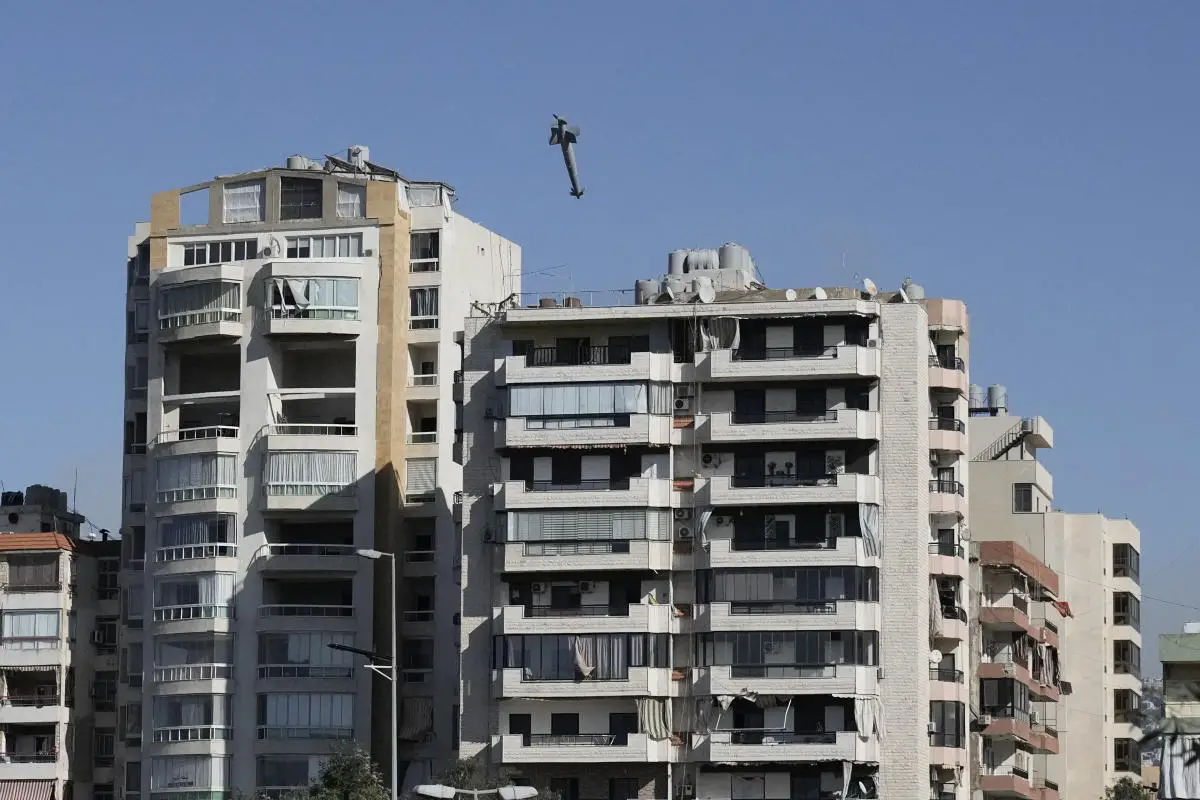BEIRUT (AP) — It came in a flash, almost too quick for the naked eye but captured perfectly in a rare sequence by an Associated Press photographer.
The missile arched toward the building and then smashed into a lower floor as people ducked and ran. Seconds later the building tumbled, sending a huge mushroom of smoke and debris into the air.
The airstrike came about 40 minutes after Israel issued an evacuation warning for two buildings in the area in Beirut’s southern suburb, claiming they were located near Hezbollah facilities.
That sent people fleeing the neighborhood, while others, including a few journalists, kept watch.
The building, on the southern outskirts of the capital Beirut, is located in a busy, densely populated neighborhood. Israel has not said why the building was brought down, besides the evacuation warning posted by an Israeli army spokesman saying it was located “near Hezbollah interests and facilities.”
Minutes before the strike brought down the building, there were two smaller strikes on the roof, what Israel’s military often refers to as warning strikes, according to AP journalists at the scene. It is a practice that has been observed in Israeli attacks in Gaza in previous conflicts.
The weapon used in the attack resembles an Israeli-made bomb kit wrapped around a standard warhead that is used for precision airstrikes.
The most powerful versions of the weapon system are based around a 1000- or a 2000-pound bomb that is fitted with a guidance kit known as SPICE, short for Smart, Precise-Impact and Cost-Effective kits.
The SPICE system’s Israeli maker, Rafael Advanced Defense Systems, advertises the kits as being able to operate day or night, including in bad weather, and in areas jammed against GPS. The 2000-pound version can be launched from as far as 60 kilometers (37 miles) away.
The Israeli military did not respond to a request for comment on the type of weapon.


Leave a Comment